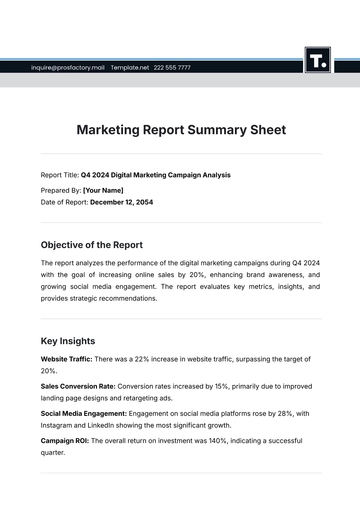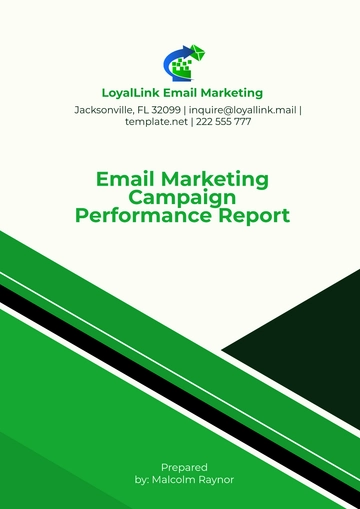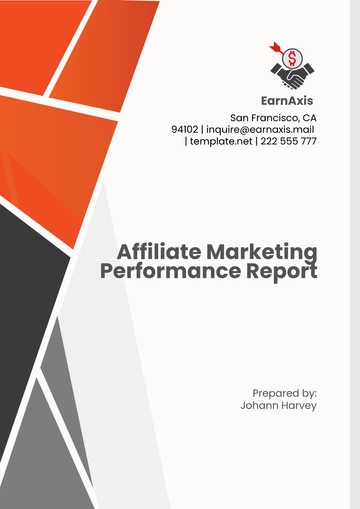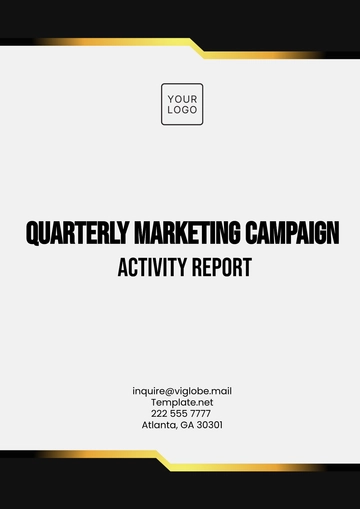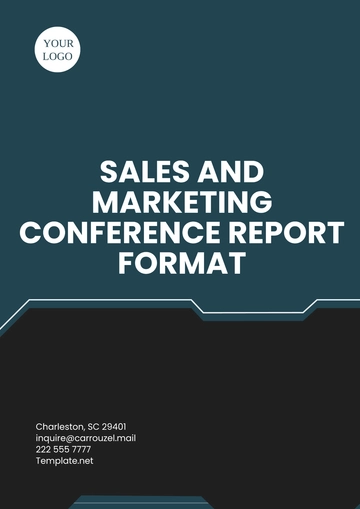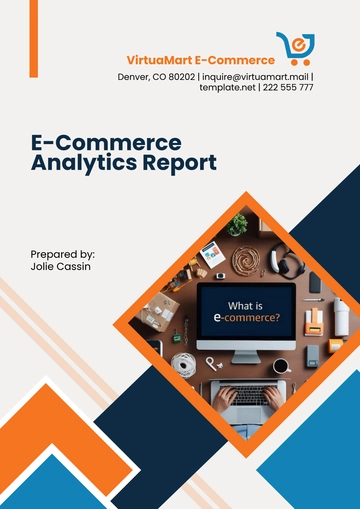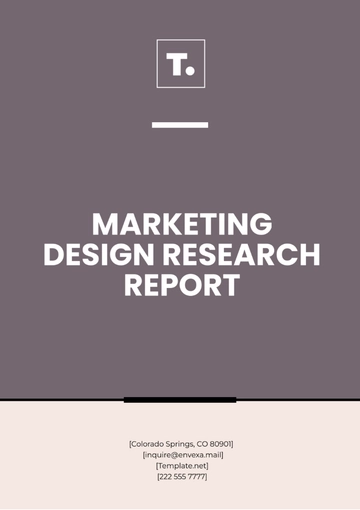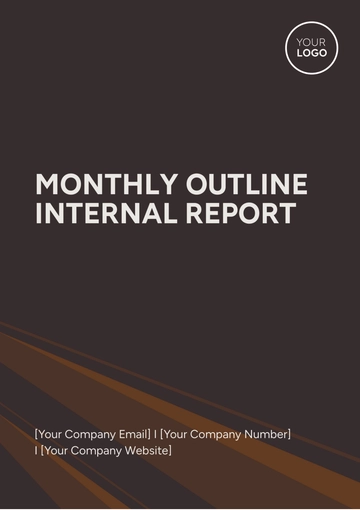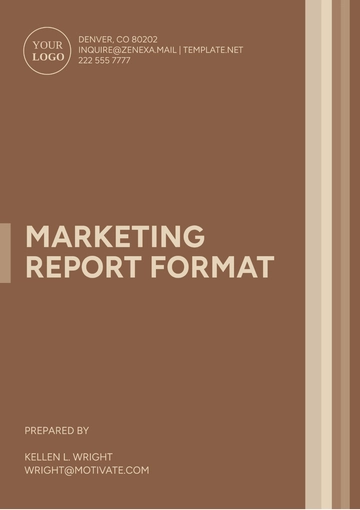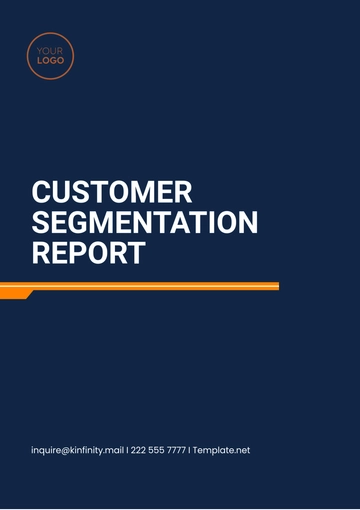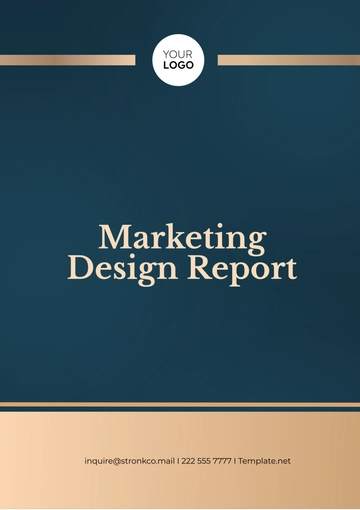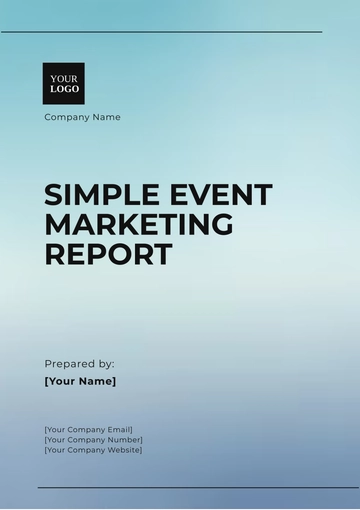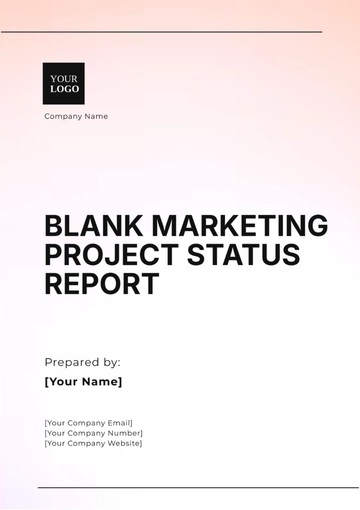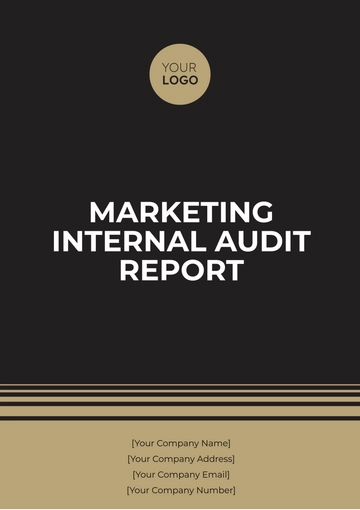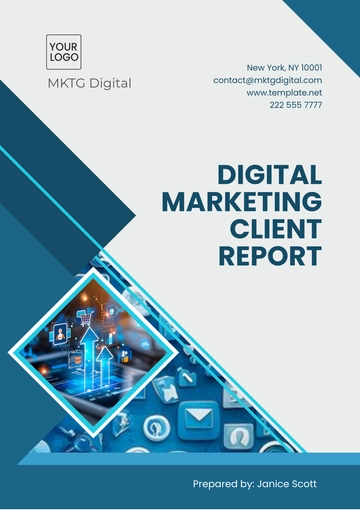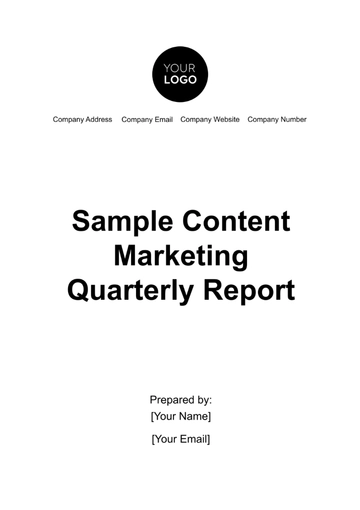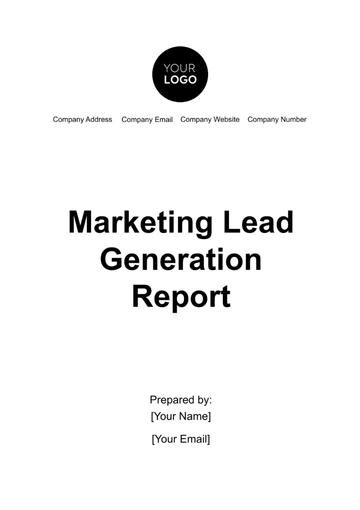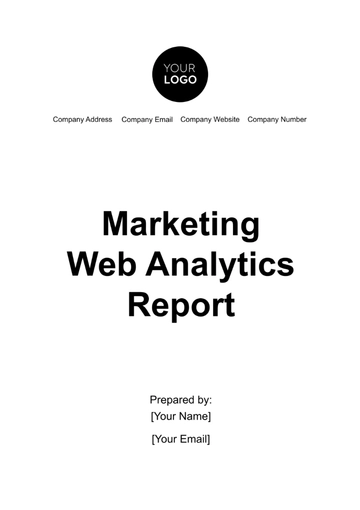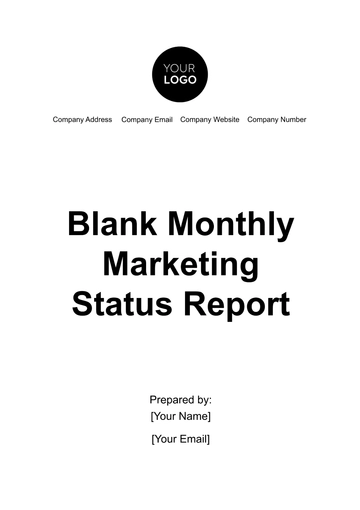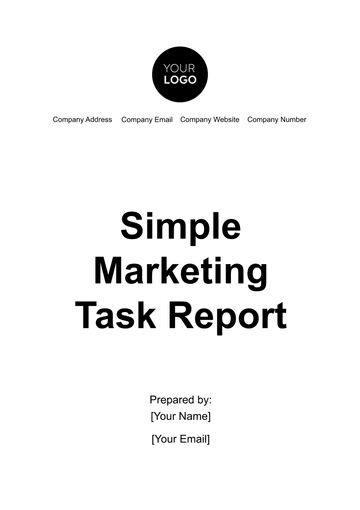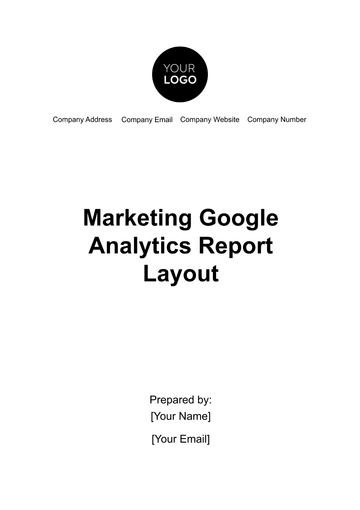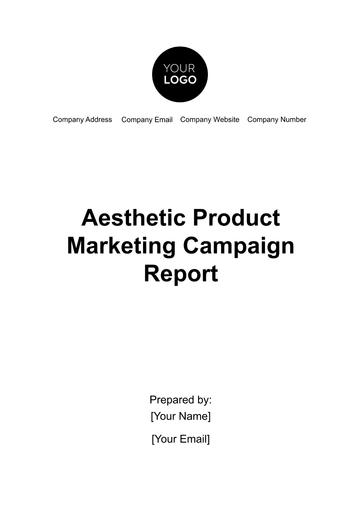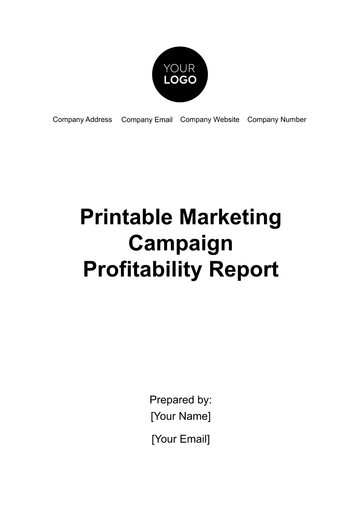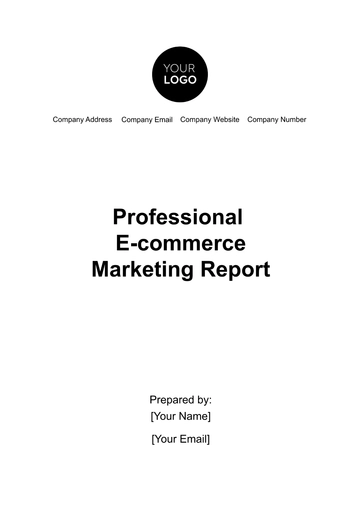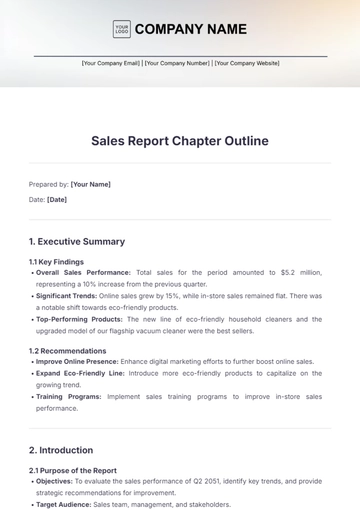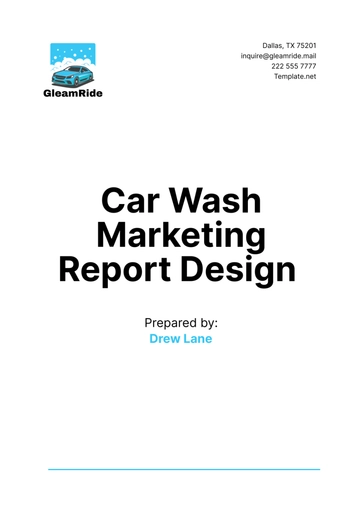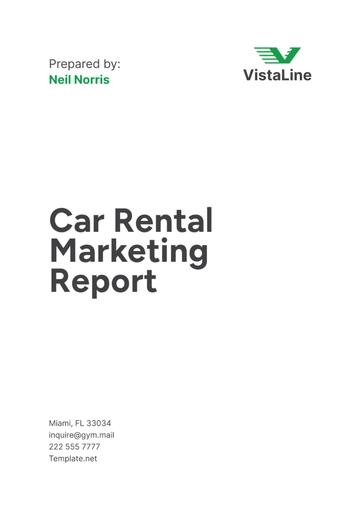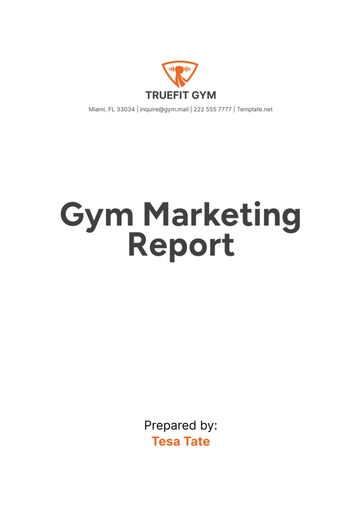Free Business Campaign Report

I. Overview
Title: Marketing Campaign Report for [Your Company Name]
Author: [Your Name]
Date: June 7, 2050
II. Executive Summary
This report provides a detailed analysis of the marketing campaign conducted by [Your Company Name] for the launch of its new product line. The campaign was designed to increase brand awareness and drive sales. The results indicate that the campaign was successful, achieving a 25% increase in sales and a 40% increase in brand awareness.
III. Introduction
A. Campaign Background
The marketing campaign was launched in January 2050 to promote [Your Company Name]'s new range of smart home devices.
B. Objectives
Increase brand awareness by 30%
Achieve a 20% increase in sales of the new product line
Enhance customer engagement on social media platforms
C. Scope
This report covers the entire campaign period from January to March 2050, analyzing the strategy, execution, and performance across various marketing channels.
D. Methodology
Data was collected from digital marketing platforms, sales reports, and customer feedback. Metrics such as reach, engagement, conversion rates, and sales figures were analyzed to evaluate the campaign's effectiveness.
IV. Campaign Overview
A. Campaign Strategy
The campaign strategy focused on a multi-channel approach, including social media, email marketing, influencer partnerships, and online advertisements.
B. Target Audience
The target audience comprised tech-savvy consumers aged 25-45, primarily located in urban areas.
C. Channels Used
Social Media (Facebook, Instagram, Twitter)
Email Marketing
Influencer Marketing
Online Advertisements (Google Ads, YouTube)
V. Results and Performance
A. Key Metrics
Metric | Target | Achieved |
|---|---|---|
Brand Awareness | +30% | +40% |
Sales Increase | +20% | +25% |
Social Media Engagement | +15% | +20% |
B. Performance by Channel
Channel | Reach | Engagement Rate | Conversion Rate |
|---|---|---|---|
1,000,000 | 5% | 2% | |
800,000 | 6% | 3% | |
500,000 | 4% | 1.5% | |
Email Marketing | 200,000 | 10% | 5% |
Influencer Marketing | 300,000 | 7% | 4% |
Online Advertisements | 2,000,000 | 3% | 1.8% |
VI. Discussion
The marketing campaign for [Your Company Name]'s new product line was successful, particularly on social media channels like Instagram and Facebook. Instagram's visual appeal showcased the smart home devices effectively, achieving a strong 6% engagement rate, surpassing industry benchmarks. Influencer partnerships also boosted brand credibility and expanded reach, resulting in a 7% engagement rate and positive audience response.
However, while online ads increased awareness, their conversion rates fell short of expectations, highlighting a need for optimization. Refining ad content through A/B testing and improving audience targeting could enhance future performance.
VII. Conclusion
The marketing campaign for [Your Company Name]'s new smart home device line exceeded expectations, successfully boosting brand awareness and driving sales. The strategy effectively utilized social media and influencer marketing, leading to a 40% increase in brand awareness, well above the 30% target.
Social media and influencer collaborations were the standout channels, generating strong engagement and contributing significantly to sales growth. For future campaigns, extending the duration and experimenting with new tactics on platforms like Twitter could enhance results even further.
- 100% Customizable, free editor
- Access 1 Million+ Templates, photo’s & graphics
- Download or share as a template
- Click and replace photos, graphics, text, backgrounds
- Resize, crop, AI write & more
- Access advanced editor
Evaluate the success of your marketing efforts with the Business Campaign Report Template by Template.net. This customizable and downloadable template allows you to meticulously track and analyze your campaign's performance. Fully printable and editable in our AI Editor Tool, it enables you to tailor every section to your specific campaign needs. Present clear and detailed insights to stakeholders with professional-grade reports.
You may also like
- Sales Report
- Daily Report
- Project Report
- Business Report
- Weekly Report
- Incident Report
- Annual Report
- Report Layout
- Report Design
- Progress Report
- Marketing Report
- Company Report
- Monthly Report
- Audit Report
- Status Report
- School Report
- Reports Hr
- Management Report
- Project Status Report
- Handover Report
- Health And Safety Report
- Restaurant Report
- Construction Report
- Research Report
- Evaluation Report
- Investigation Report
- Employee Report
- Advertising Report
- Weekly Status Report
- Project Management Report
- Finance Report
- Service Report
- Technical Report
- Meeting Report
- Quarterly Report
- Inspection Report
- Medical Report
- Test Report
- Summary Report
- Inventory Report
- Valuation Report
- Operations Report
- Payroll Report
- Training Report
- Job Report
- Case Report
- Performance Report
- Board Report
- Internal Audit Report
- Student Report
- Monthly Management Report
- Small Business Report
- Accident Report
- Call Center Report
- Activity Report
- IT and Software Report
- Internship Report
- Visit Report
- Product Report
- Book Report
- Property Report
- Recruitment Report
- University Report
- Event Report
- SEO Report
- Conference Report
- Narrative Report
- Nursing Home Report
- Preschool Report
- Call Report
- Customer Report
- Employee Incident Report
- Accomplishment Report
- Social Media Report
- Work From Home Report
- Security Report
- Damage Report
- Quality Report
- Internal Report
- Nurse Report
- Real Estate Report
- Hotel Report
- Equipment Report
- Credit Report
- Field Report
- Non Profit Report
- Maintenance Report
- News Report
- Survey Report
- Executive Report
- Law Firm Report
- Advertising Agency Report
- Interior Design Report
- Travel Agency Report
- Stock Report
- Salon Report
- Bug Report
- Workplace Report
- Action Report
- Investor Report
- Cleaning Services Report
- Consulting Report
- Freelancer Report
- Site Visit Report
- Trip Report
- Classroom Observation Report
- Vehicle Report
- Final Report
- Software Report
